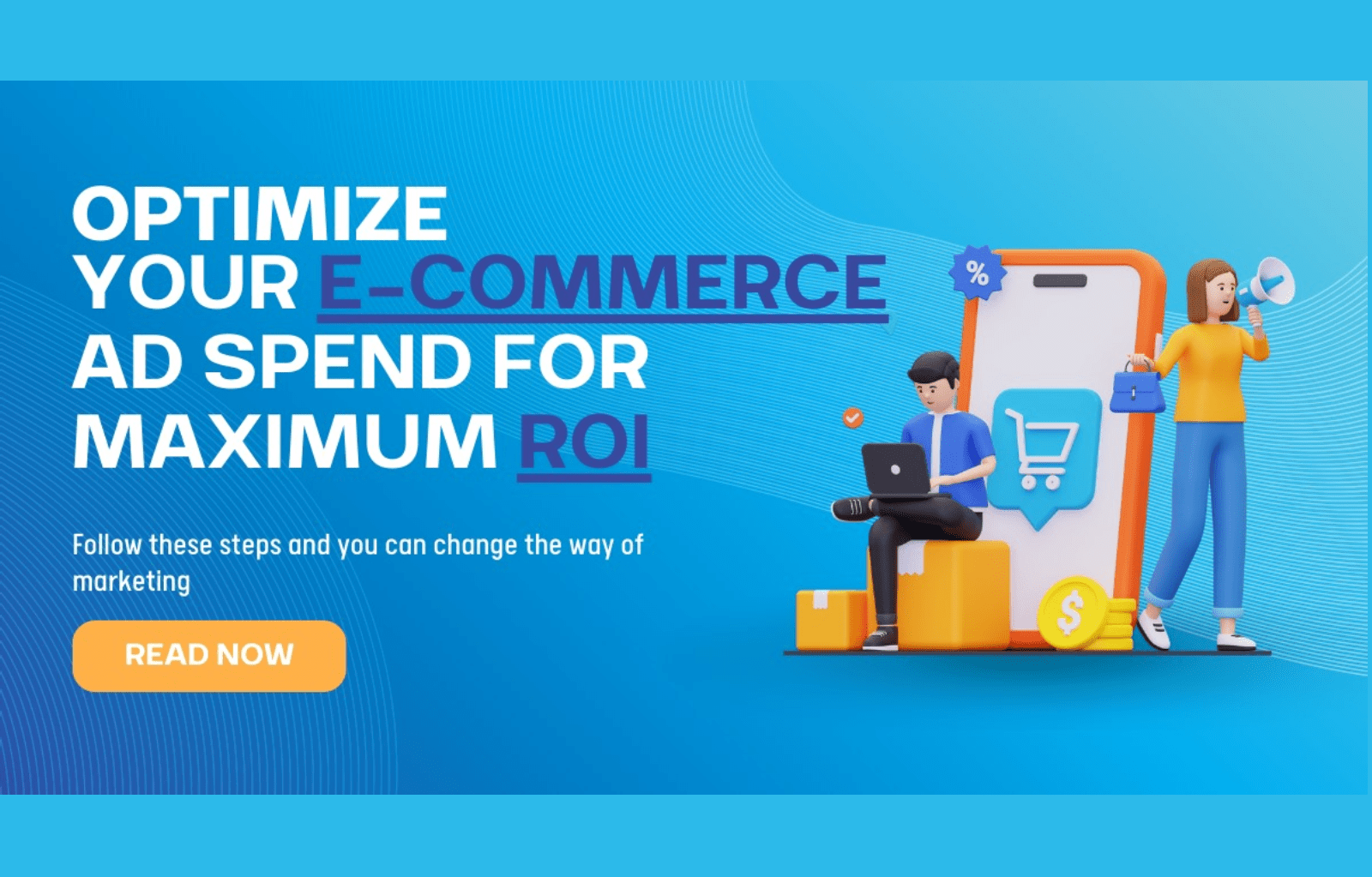
E-commerce sales continue to grow year after year, so an effective online advertising strategy is very important for all e-commerce businesses to attract new customers and bring money in.
But ad budgets aren’t infinite; it’s vital that you optimize your ad budget to get the maximum bang for your buck. Follow these tips to make the most of your e-commerce PPC budget and maximize your return on investment (ROI).
Read More Interesting Blogs:-
- How Digital Marketing Agency Helps to Grow Your Business in 2023
- What Is Influencer Marketing?
- 5 Reasons Why Your Website’s Search Engine Ranking Get Dropped
1. Set Clear Goals and KPIs
Before determining your budget and launching campaigns, define your goals and key performance indicators (KPIs). Typical e-commerce ad goals include:
- Increasing brand awareness
- Generating more traffic to your store
- Growing sales and revenue
- Improving return on ad spend (ROAS)
Once you know your goals, identify the KPIs you’ll use to track performance. Common e-commerce KPIs are:
- Click-through rate (CTR)
- Cost per click (CPC)
- Conversion rate
- Return on ad spend (ROAS)
With clear goals and KPIs, you can allocate a budget, choose channels, and optimize campaigns more effectively.
2. Audit Your Website for Conversion Optimization
To get the most value from your ad spend, ensure your website is optimized for conversions. Conduct an audit to identify and fix issues like:
- Slow page speeds – Improving site speed can increase conversion rates.
- High bounce rates – Look at entry and exit pages to reduce bounces.
- Poor mobile experience – Most traffic is mobile, so ensure great UX.
- Confusing navigation or site information – Streamline site navigation and product/service info.
- Broken links or images – Fix all broken elements on site pages.
- Lack of trust signals – Add reviews, testimonials, guarantees, etc.
- Complicated checkout process – Simplify checkout to reduce cart abandonment.
Optimizing these elements will ensure visitors who click your ads convert faster.
3. Use Data to Guide Budgeting Decisions
Leverage data to optimize your budget allocation across channels, campaigns, and even days or hours. Analyze performance data to see:
- Which channels drive the most cost-effective conversions
- Which campaigns have the best ROAS
- High- and low-converting days/times for ads
Use this information to focus the budget on better-performing areas. Continuously assess performance and shift funding to take advantage of opportunities.
4. Implement Conversion Pixel and Tracking
Installing Facebook and Google conversion pixels is crucial for optimizing ads. With conversion tracking, you can:
- Retarget customers who didn’t initially convert
- Create lookalike audiences modeled off converters
- See which keywords and placements drive conversions
Likewise, track conversions from specific campaigns and ads. Know your best-converting assets to reallocate the money accordingly.
5. Bid Strategically Based on Conversion Data
Leverage conversion data to employ savvy bidding strategies. For example:
- Target Impression Share – Bid to achieve a high impression share for better visibility.
- Manual CPC Bidding – Manually set bids based on conversion potential.
- Enhanced CPC Bidding – Automatically raises bids for high conversion probability clicks.
- Target CPA Bidding – Bid to achieve a target cost-per-acquisition.
6. Create Highly Targeted Ad Sets
Segment your audience into highly targeted ad sets focused on:
- Specific products/services
- Various stages of the buyer’s journey
- Detailed demographics like job role or income
- Defined interests aligned to products
- Other unique attributes of your audience
With tight targeting, you can tailor messaging and optimize for each audience. This increases relevance, conversion rates, and ROAS.
7. A/B Test Ad Creative and Landing Pages
Run A/B split tests on your ad creative and landing pages to discover what resonates best with your audience. Test elements like:
- Ad copy
- Images/video
- Calls-to-action
- Headlines
- Page layouts
- Content organization
Analyze performance and double down on better-converting variations.
8. Use Negative Keywords
Add negative keywords to exclude irrelevant clicks from your target audience. For example, if you run a shoe store, add “shoe repair” as a negative keyword to avoid those searching for shoe repair services.
Trim wasted spending with negative keywords to maximize ROAS.
9. Review Reports Frequently and Make Changes
Regularly review campaign reports on CTR, CPC, conversions, and ROAS metrics. Look for opportunities to refine targeting, bids, budgets, and creativity.
Make small iterative changes frequently rather than big shifts sporadically—test and iterate for continuous optimization.
10. Don’t Ignore Retargeting
Retargeting helps convert abandoners and existing customers. Create remarketing lists and ads tailored to different segments:
- Visitors who viewed products
- Visitors who added items to the cart
- Previous converters/customers
Include retargeting in your paid media mix for a well-rounded conversion strategy.
By following these tips, you can stretch each dollar of ad spend further. Monitor KPIs closely as you refine campaigns, targets, bids, and creativity. Over time, you will optimize ad performance and ROI.
For best results in optimizing your e-commerce PPC budget and driving maximum ROI, partner with a digital marketing agency like Brandlogies. Their experts can help implement these strategies tailored to your business goals. Also, you can stretch your budget further and make the most of your ad investments.

